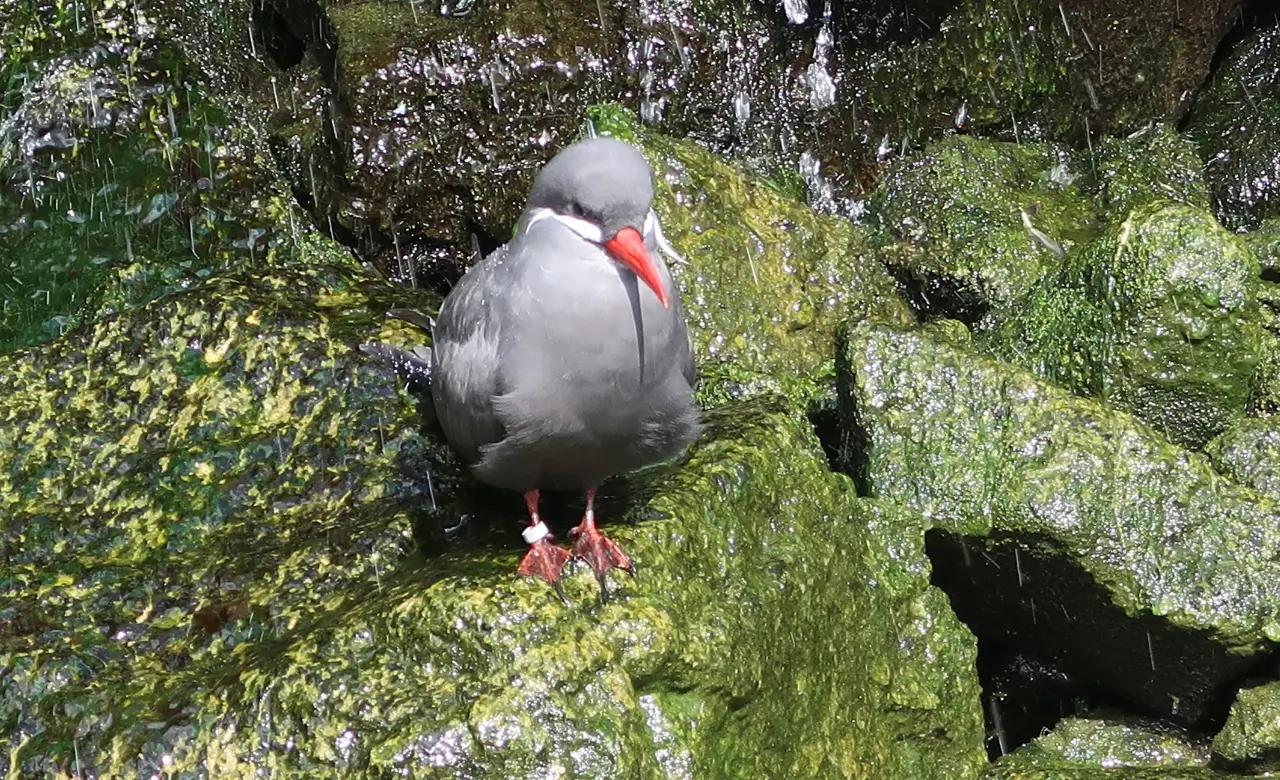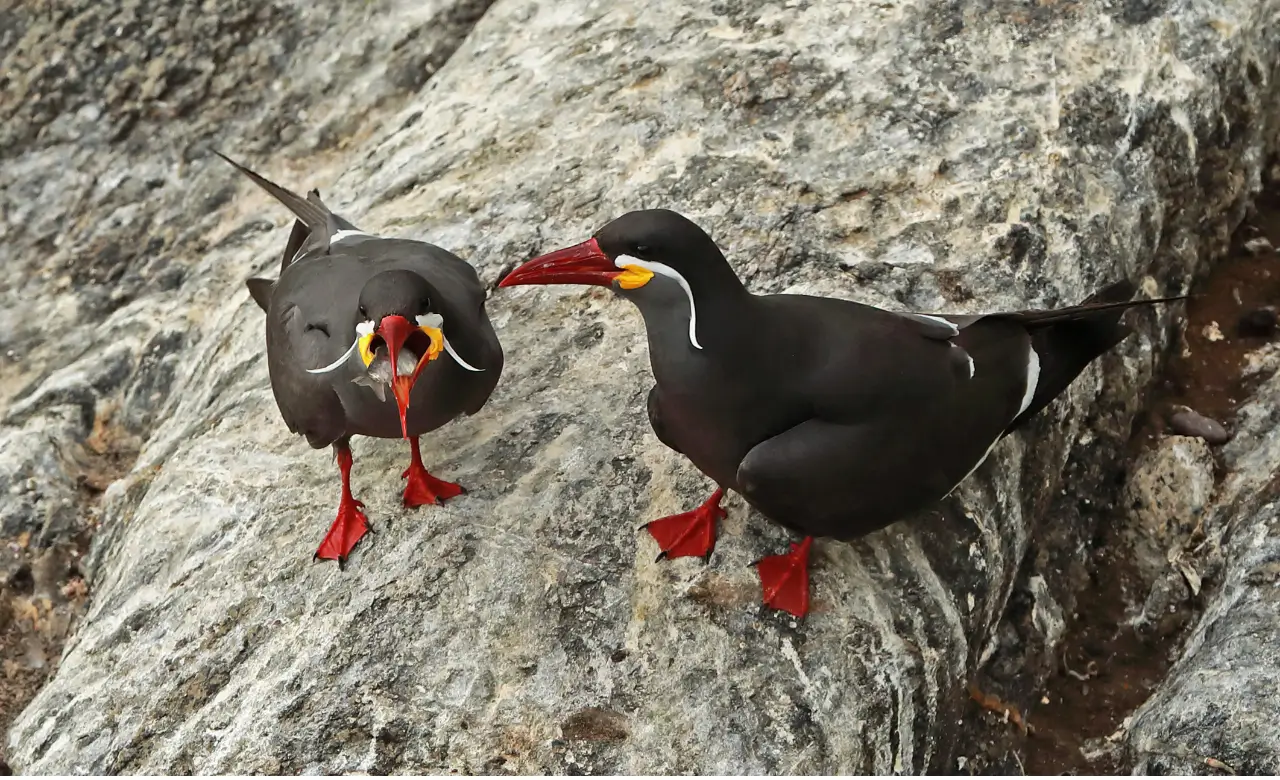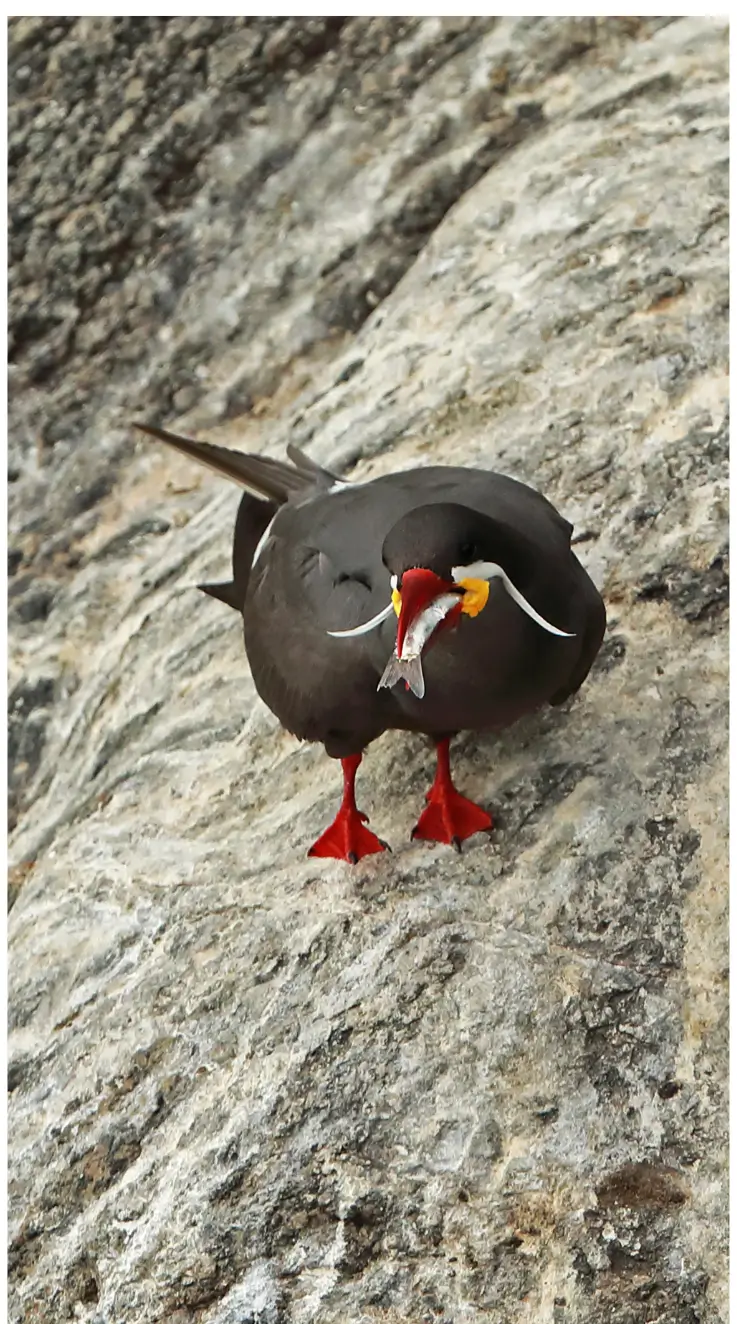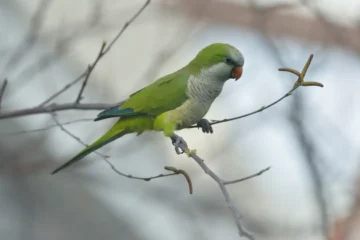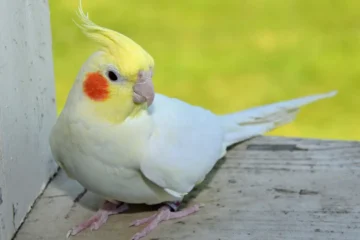The Inca Tern is a seabird known for its unique white mustache and dark gray feathers. It lives along the coasts of Peru and Chile but is often seen in U.S. zoos and bird parks.
People love its playful nature and attractive look. It eats mostly small fish like anchovies. It’s a favorite among bird lovers in the USA because of its interesting nature.
Images of Inca Tern
Price of Inca Tern
An Inca Tern usually costs between $300 to $500. The price can vary based on the bird’s age, health, and breeder reputation.
General Characteristics of Inca Tern
This bird is quite fascinating in terms of its apparent features and adds to the diversity of the birds in USA. Here are some general characteristics of this bird:
| General Characteristic | Inca Tern Features |
| Scientific Name | Larosterna inca |
| Size | Around 16 inches long |
| Weight | Averages about 170 to 200 grams |
| Color | Dark gray body |
| Beak | Long, sharp, and red in color |
| Legs | Bright red legs and feet |
| Distinctive Feature | Curved white feathers on both sides of its beak, resembling a mustache |
| Diet | Mainly eats small fish like anchovies |
| Sound | Makes a sharp, high-pitched “kreee” call |
| Flight Style | Agile and fast flier, often diving near water |
| Breeding Season | Typically from April to July |
Life Span of Inca Tern
An Inca Tern lives around 14 years in captivity with regular care. Their lifespan is usually shorter of about 7 to 10 years in the wild.
Interesting Facts Related to Inca Tern
This bird catches the attention of the visitors when seen especially for the first time. Here are some of the interesting facts of this bird which can also catch your interest:
1. White Moustache for Communication
Inca Tern’s curly white moustache signals health and maturity. Birds with fuller and brighter moustaches are more likely to attract a mate. It acts like a natural status symbol within their colonies.
Inca Terns use this visual signaals unlike many birds that rely on songs. This makes their look both functional and fascinating.

2. Nests in Abandoned Burrows
Inca Terns prefer reusing old burrows left by other animals. They often settle in cracks, holes, and abandoned tunnels along the pacific coast. This nesting habit is rare among seabirds.
The zoos replicate this by providing artificial crevices to keep them comfortable. It reflects their adaptability and need for shelter over height.
3. Feeds Using Surface Skimming
Inca Terns feed by touching the ocean’s surface rather than diving deep. They fly low over the water and picks off fishes with quick precision. This hunting method allows them to stay airborne most of the time.
They rarely submerge like pelicans or cormorants. It’s a adaptive way of fishing that suits their lightweight build and fast movements.
4. Favors Cold Ocean Currents
These birds survive in the Humboldt Current, which brings cold and nutrient-rich waters along the South American coast. It’s rare for a tropical-looking bird to prefer such cold conditions.
Their enclosures are kept cool to mimic this natural preference. Their comfort is closely tied to the temperature of their habitat. It’s a surprising trait owing to their elegant look.
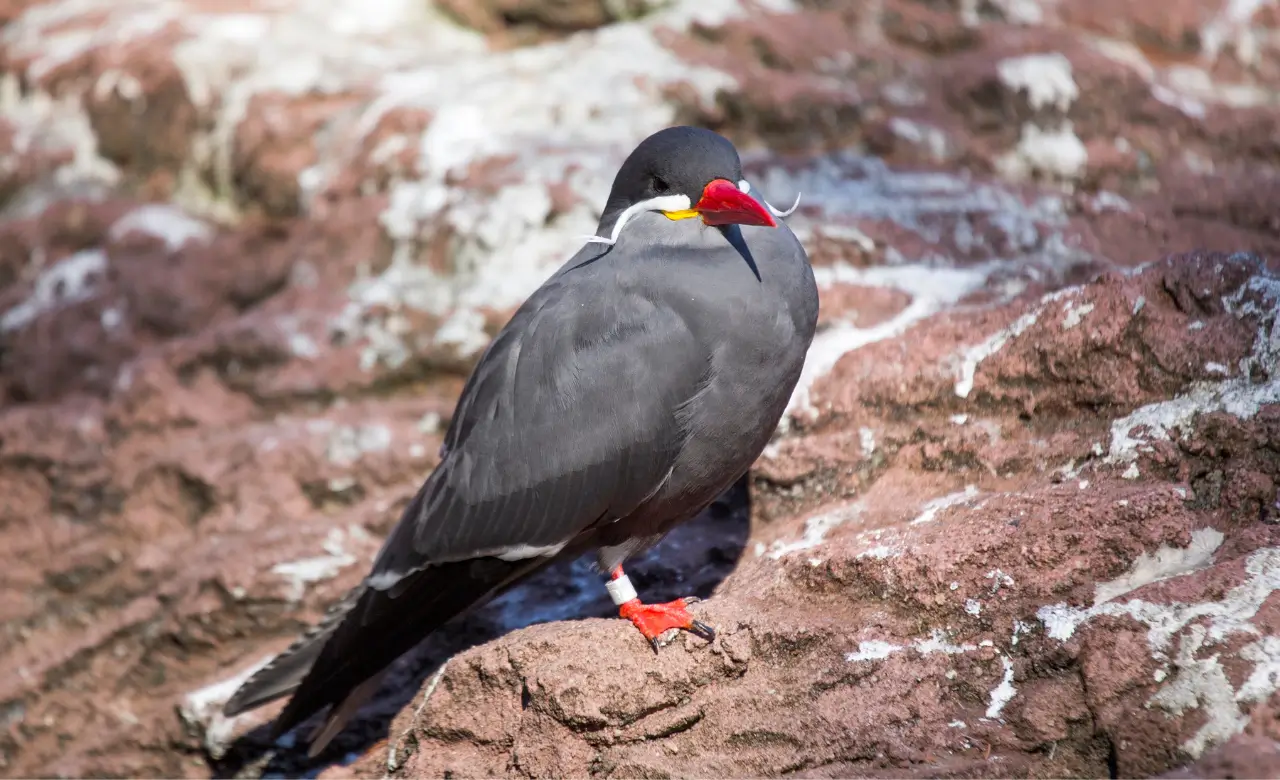
5. Lives in Large Noisy Colonies
Inca Terns are social and loud. They gather in large colonies with hundreds of individuals nesting close together. Their colonies are full of constant chatter. This makes them one of the noisiest seabirds in their range.
This behavior helps them stay alert to predators and navigate busy environments. It’s an interesting contrast to their silent and sharp appearance.
6. Rarely Migrates Long Distances
Inca Terns usually stay near their birthplace rather than migrating long distances. They are considered lazy because they stay near the west coast of South America year-round.
This limited movement is unusual for a seabird and keeps their range very specific. This also helps with managing their enclosure needs because they don’t require large flight spaces.
7. Has Bright Red Beak and Feet
The Inca Tern’s bright red beak and feet stay vivid year-round. This constant color helps maintain pair bonds and group identity. The red contrasts strongly with their dark gray feathers which makes them easy to recognize.
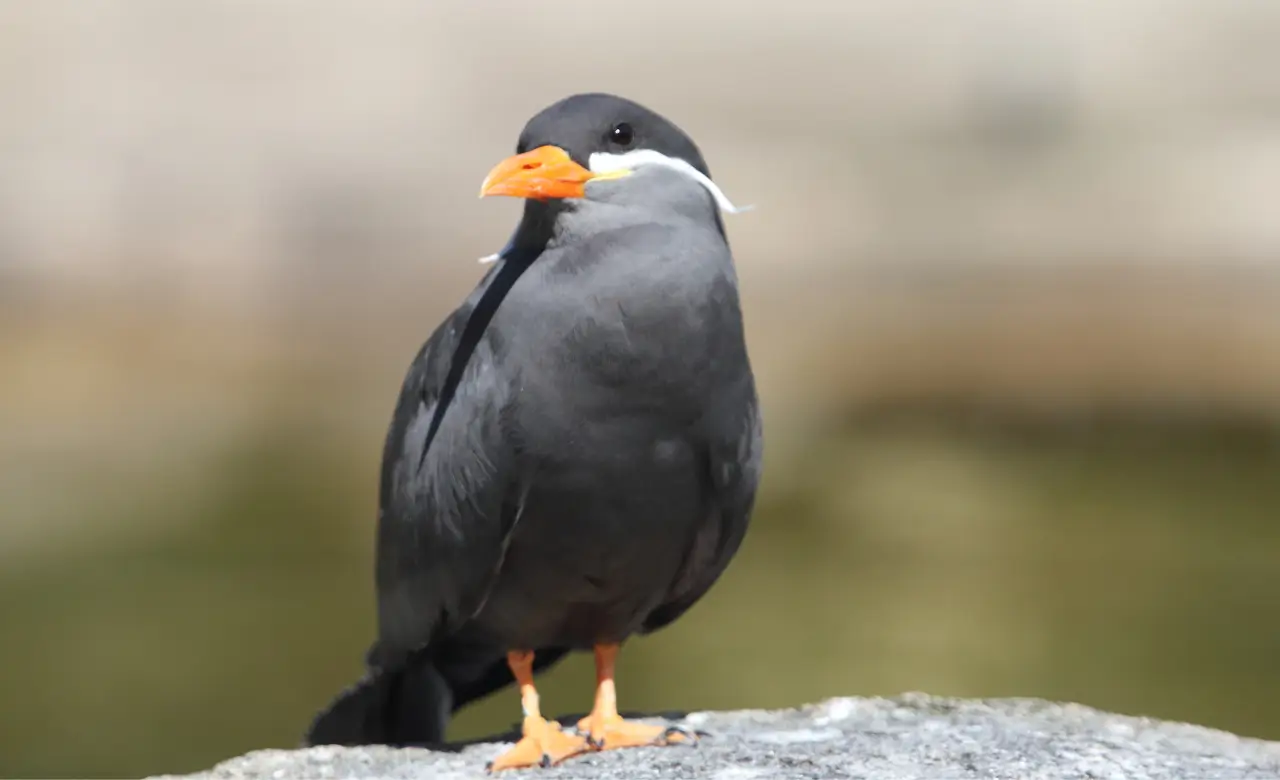
8. Shows Cooperative Parenting
Both parents take turns feeding and protecting the chicks. This shared parenting system leads to higher chick survival rates. It shows how invested these birds are in raising their young. The teamwork is a good example of equality in nature.
9. Rarely Found Outside Specialized Zoos
Inca Terns are mostly seen in major zoos or aquariums with coastal or tropical exhibits. Their care requires specific temperatures, diets, and social settings.
They’re not popular in pet trade due to these specialized needs. They’re truly a hidden gem in bird collections.
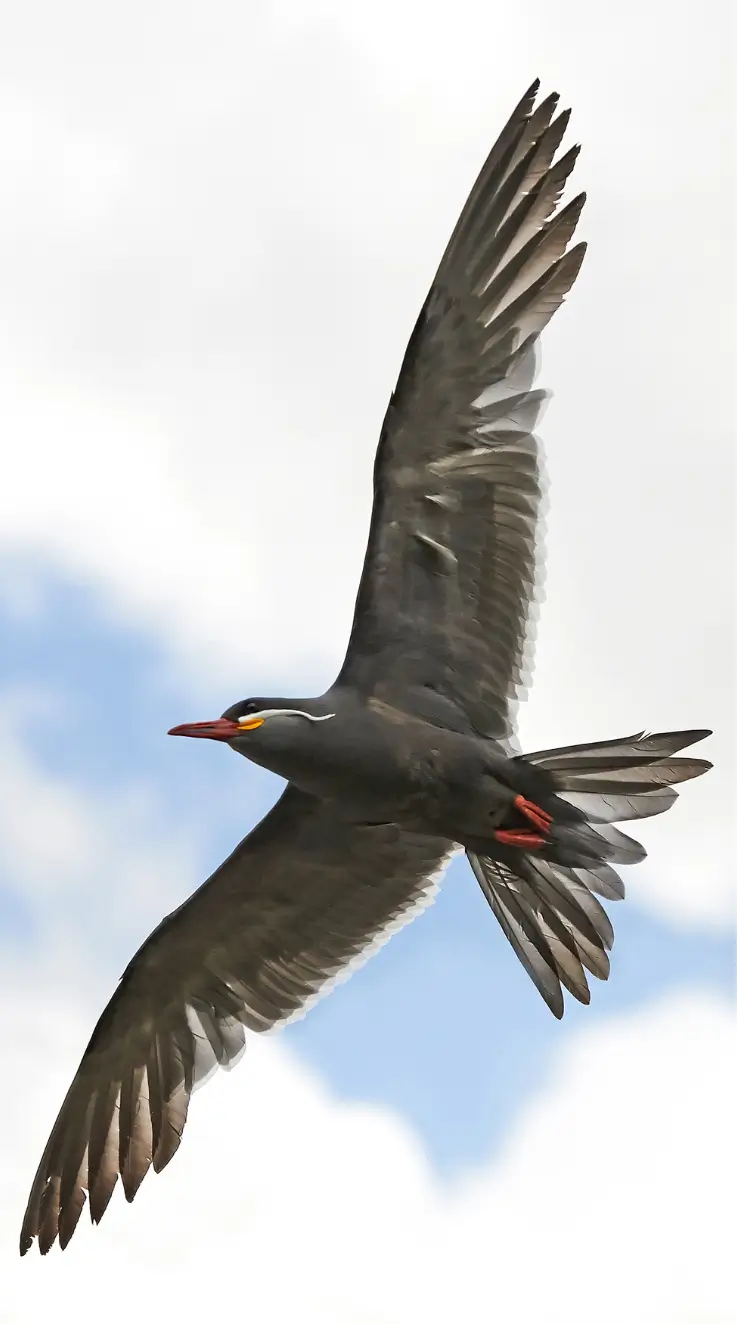
10. Uses Unique Call Sounds
Inca Terns make a sharp and cat-like mewing sound that is quite different from typical seabird calls. This vocalization helps them communicate in noisy colonies. This is often described as surprisingly high-pitched and expressive.
Their voice is as unique as their look. It’s one of their lesser-known but catchy features.
11. Forms Long-Term Pairs
Inca Terns often stay together for life after choosing a mate. These long-term bonds are maintained through preening, feeding, and resting together.
The same pairs returning to each other across multiple breeding seasons have been observed. This loyalty is rare in many bird species.
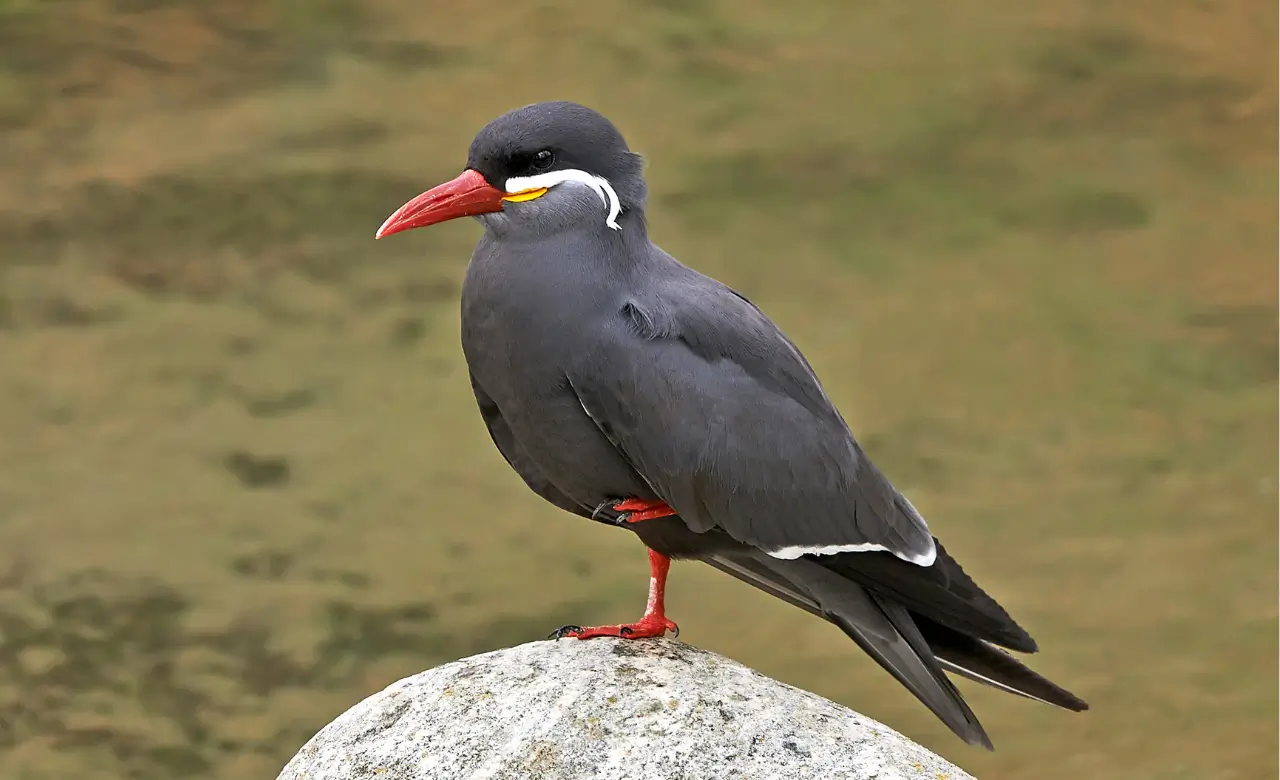
12. Adapts Well to Enclosed Habitats
Inca Terns adapt surprisingly well to life in captivity despite being wild seabirds. They respond positively to enrichment like mirrors, flowing water, and flight tunnels.
Their adaptability helps conservationists study and protect them more effectively. It also makes them ideal ambassadors for seabird conservation.
Sightseeing of Inca Tern
These birds are mostly found near the sea coast because of their diertay needs. Here are certain places where these birds are mostly seen:
| Location | State in Which it is Located |
| Saint Louis Zoo | Missouri |
| National Aviary | Pennsylvania |
| Dallas World Aquarium | Texas |
| Oregon Coast Aquarium | Oregon |
| San Diego Zoo | California |
| Aquarium of the Pacific | California |
| Bronx Zoo | New York |
| Sedgwick County Zoo | Kansas |
Photography Tips for Inca Tern
Here are some practical tips for taking good clicks of this bird and keeping the visit as a memory:
-
Use a zoom lens to capture pictures without disturbing the bird.
-
Shoot during early morning or late afternoon for softer light and rich feather details.
-
Focus on the bird’s white mustache to highlight its unique facial feature.
-
Keep a fast shutter speed to freeze their quick flight near water.
-
Use burst mode when they dive or fly to catch action frames.
-
Visit coastal aviaries or zoos in the USA like the Oregon Coast Aquarium for steady shots.
Final Remarks
This bird is quite different from other sea bird species because it makes loud noise and distinguished sounds. The calm appearence is contrasted by the loud sounds. The white mustache makes its apparent look quite different from other birds. The diving and prey catching skills are quite sharp. This bird is a real gem for the biodiversity of the wildlife.
FAQs
1. Can I see an Inca Tern in the USA?
No, Inca Terns are native to the west coast of South America, but a few can be seen in U.S. zoos and aquariums.
2. Why does the Inca Tern have a mustache?
The white mustache helps signal health and strength during mating, since only healthy birds grow prominent ones.
3. What does the Inca Tern eat?
It mainly eats small fish and catch them while flying low over the ocean.


